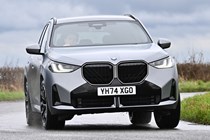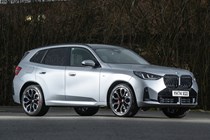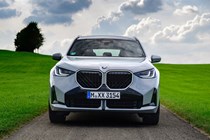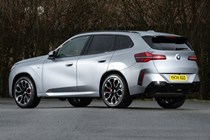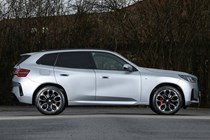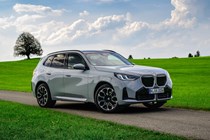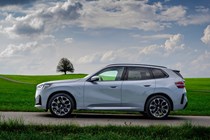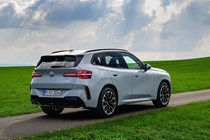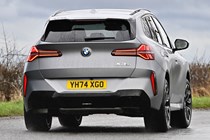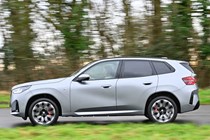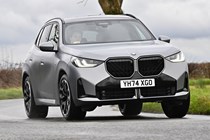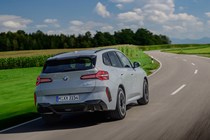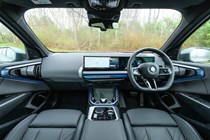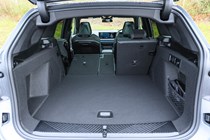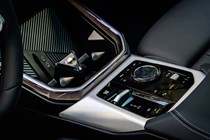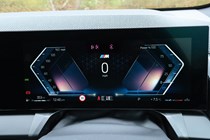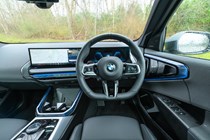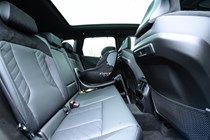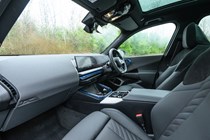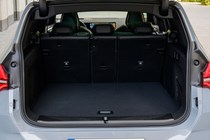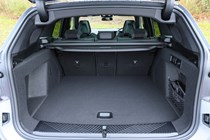
BMW X3 engines, drive and performance
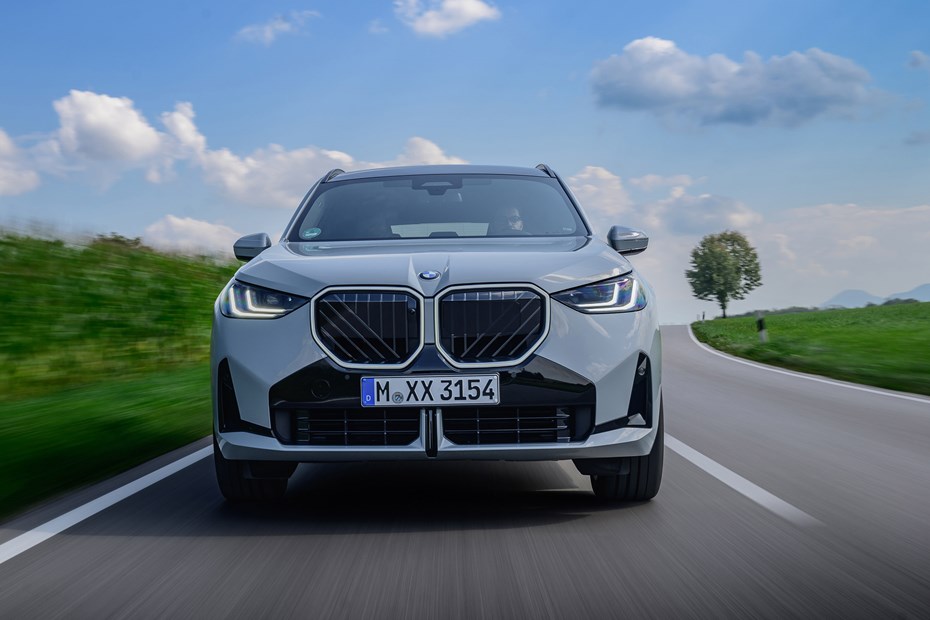
Petrol engines
BMW is cutting back its choice of engines in the UK across its line-up, but there’s still a decent range of versions available with the X3, including two petrol, one diesel and a plug-in hybrid we’ll explore in a later section. All X3s are all-wheel-drive and use an eight-speed automatic transmission, too.
The entry-level engine is the 20 xDrive, a mild-hybrid 2.0-litre petrol engine producing 208hp and 330Nm of torque (pulling power). With this, 0-62mph can be dispatched in 7.8 seconds, yet BMW still claims reasonable efficiency. It’s smooth and quiet in normal use, but does need to be revved quite hard to feel as quick as the numbers suggest.
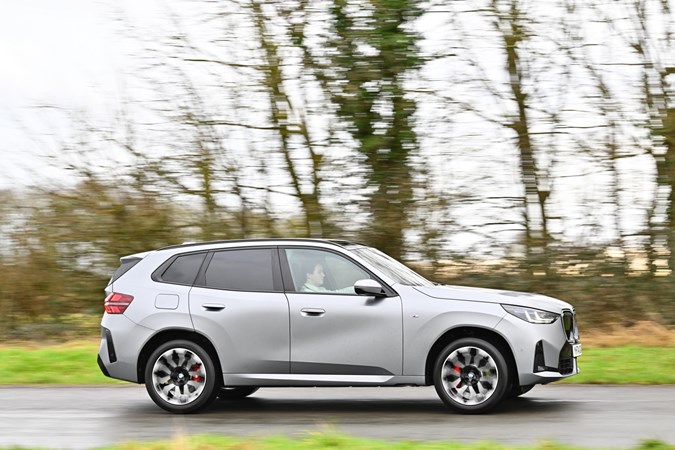
At the top of the current X3 line-up is the new M50 model, which has the most potent M Performance (not full-fat M) straight-six engine ever. Producing a plentiful 398hp and 580Nm of torque, it’s by far the quickest version of this SUV available and feels far more muscular than the base petrol lump. Accelerating from 0-62mph takes just 4.6 seconds and the top speed is limited to 155mph.
Diesel engines
BMW has largely discontinued diesel from its line-up with the exception of its SUVs, and the new X3 remains available with fuel from the black pump. The firm says this is because diesel still appeals to the towing market, and with the ability to tow up to 2.5 tonnes, the X3 could be a good choice for caravanners.
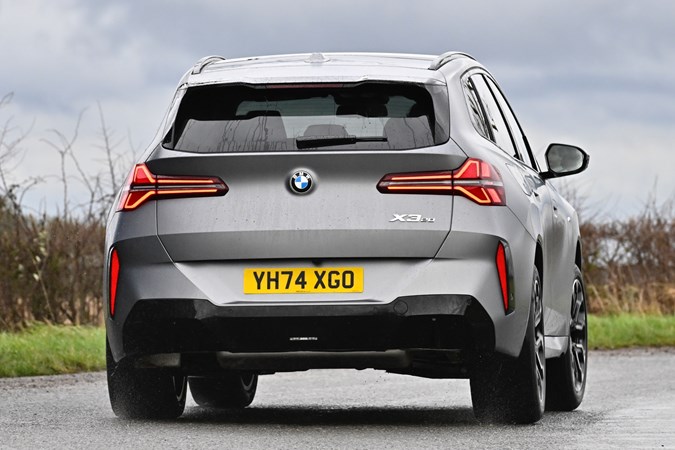
The engine is called the ‘20d xDrive’ – a 2.0-litre mild-hybrid diesel putting out 197hp and 400Nm of torque. Accelerating to 62mph will take 7.7 seconds, with BMW claiming up to 49mpg – if you clock up a lot of miles and want to keep fuel bills to a minimum, it’s an appealing choice. We’ll report back when we’ve sampled it.
Plug-in hybrid
Plug-in hybrids have been key to the X3’s continued strong sales performance, and BMW is hoping that continues with the new 30e xDrive model. Using a 2.0-litre turbocharged petrol engine and electric motor integrated within the gearbox, total figures are 299hp and 450Nm of torque, enabling a 6.2-second 0-62mph time.
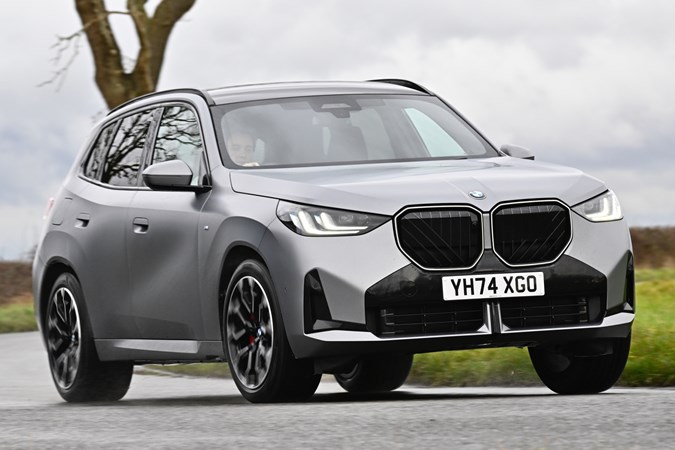
The key attraction here is its new, larger 19.7kWh battery that unlocks a claimed 55-mile electric range, almost twice that of its predecessor, though we’re yet to drive it. While a big improvement, it’s still someway behind the exceptional 83-mile electric range of the Mercedes GLC.
What it’s like to drive?
The driving experience has long been the best bit of the X3, and that only improves with this latest model. The majority of our driving time has been in the UK with a petrol xDrive 20, but we have also driven the M50 for a few hours abroad. This is more of a rival for the Audi SQ5 and Mercedes-AMG GLC43, but if you’ve got a bit more money to spend on a premium SUV, it is an exceptional choice.
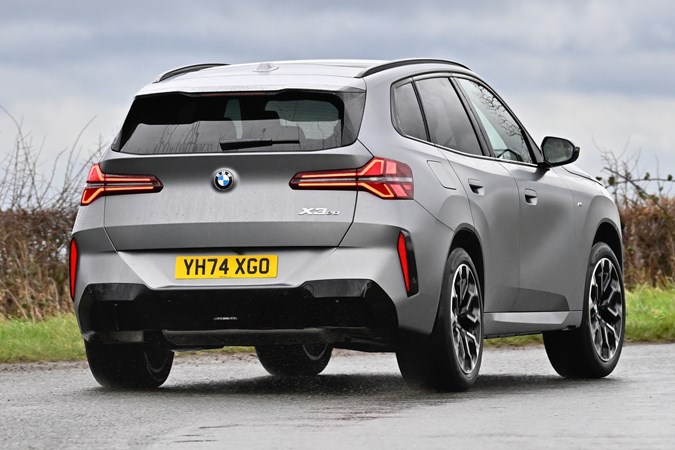
Silky smooth and delivering strong performance, the M50’s straight suits the X3 perfectly, with a pleasing engine and exhaust note to go with it. The X3 is one of the best cars to drive in its class regardless of engine, with plenty of steering feel, a tight turn-in and great balance, allowing you to drive this SUV harder than you would feel comfortable in most rivals. Yet despite this sportier feel, the ride quality is still impressive, at least with adaptive dampers.
These are standard on the M50 and optional on lesser models, allowing you to flick between various settings for maximum comfort or improved handling, and even in its harshest setting, the ride quality is excellent. From what we can tell it’s far more comfortable than its predecessor, with more breadth of ability in its damping.
X3s with fixed M Sport suspension (standard on M Sport) are also a bit more comfortable than before, if still most definitely a BMW. You’re still aware of the road’s imperfections at lower speeds, yet potholes, pimples and other nasties are rounded off more adroitly. The ride smoothes out more as speeds increase, making the X3 an SUV that you’d happily do big mileage in. Entry-level xLine gets smaller wheels and softer suspension and is worth considering if you value comfort.


